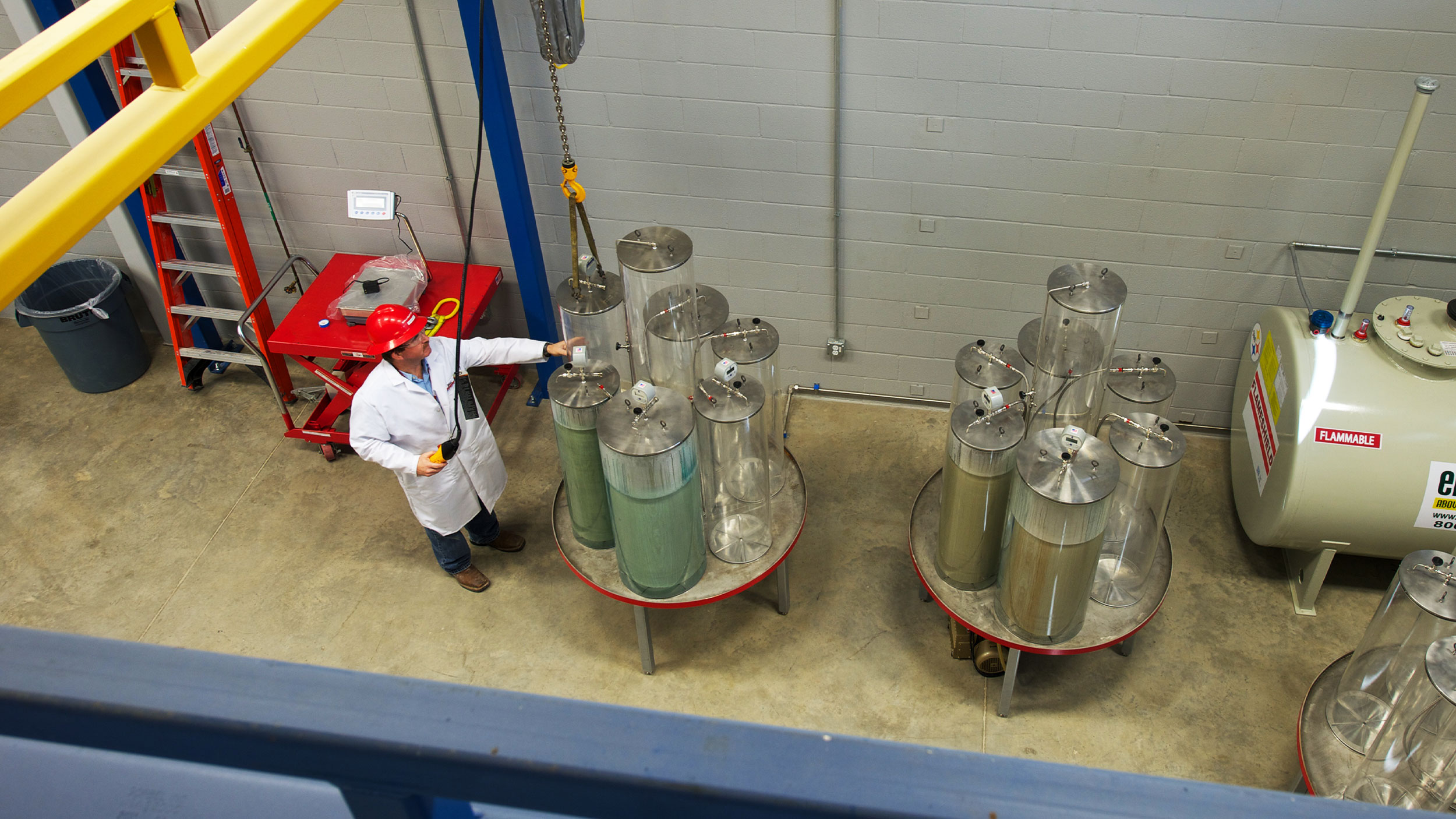


Optimize your perforations and your overall completion.
Talk to an ExpertThe Advanced Perforating Flow Lab (APFL) helps us understand how perforations actually perform under extreme downhole conditions. It can provide real-world answers that account for overburden stress, reservoir pore pressure, wellbore pressure, and reservoir and wellbore response. The APFL can also help identify the optimum solution to connect the wellbore and reservoir.
Assess flow efficiency and productivity of your perforations - in the laboratory - before perforating your well, enabling you to confirm or refine well performance estimates and adjust the perforation strategy if needed to maximize asset value. Evaluate the influence of many parameters on inflow performance, including completion fluids, perforating charge design, system configuration, and deployment setup.
Assess the potential for sanding, both early and late in a well’s life. Flow tests through actual perforations in the APFL can replicate life-of-well scenarios, including depletion and water cut. This enables operators to identify potential triggers for sand production, and make informed decisions regarding production and/or solids management strategies throughout the life of the asset.
Certain operational procedures may be desired to improve wellsite efficiency, such as perforating at static overbalance to eliminate the need for surface pressure-control equipment. However, this can influence perforation design and well inflow performance. Evaluating such methods in the APFL enables operators to optimize the fluids and pressures involved, maximizing rigsite efficiency and well performance.
Matching your reservoir starts with the rock. The ideal laboratory target is an actual core sample from your reservoir. But when these aren’t available in the required size, quarried outcrop rock is used as an analog. The Advanced Perforating Flow Laboratory has access to many different varieties of natural sandstones, carbonates, and shales, and features a full onsite coring facility to extract cores directly from large blocks of anything a quarry can deliver. Cores are fully prepared onsite – including vacuum saturation with desired fluids. Core strength, porosity, and permeability are precisely measured onsite.
The APFL features the industry’s most comprehensive analysis laboratory for post-test evaluation. Our onsite CT scanner enables detailed nondestructive characterization of perforation tunnels and interior features of the core. Recent laboratory enhancements include an advanced optical comparator. Using this latest technology, the APFL delivers the most accurate, precise, and reliable measurements of casing hole sizes in the industry.
